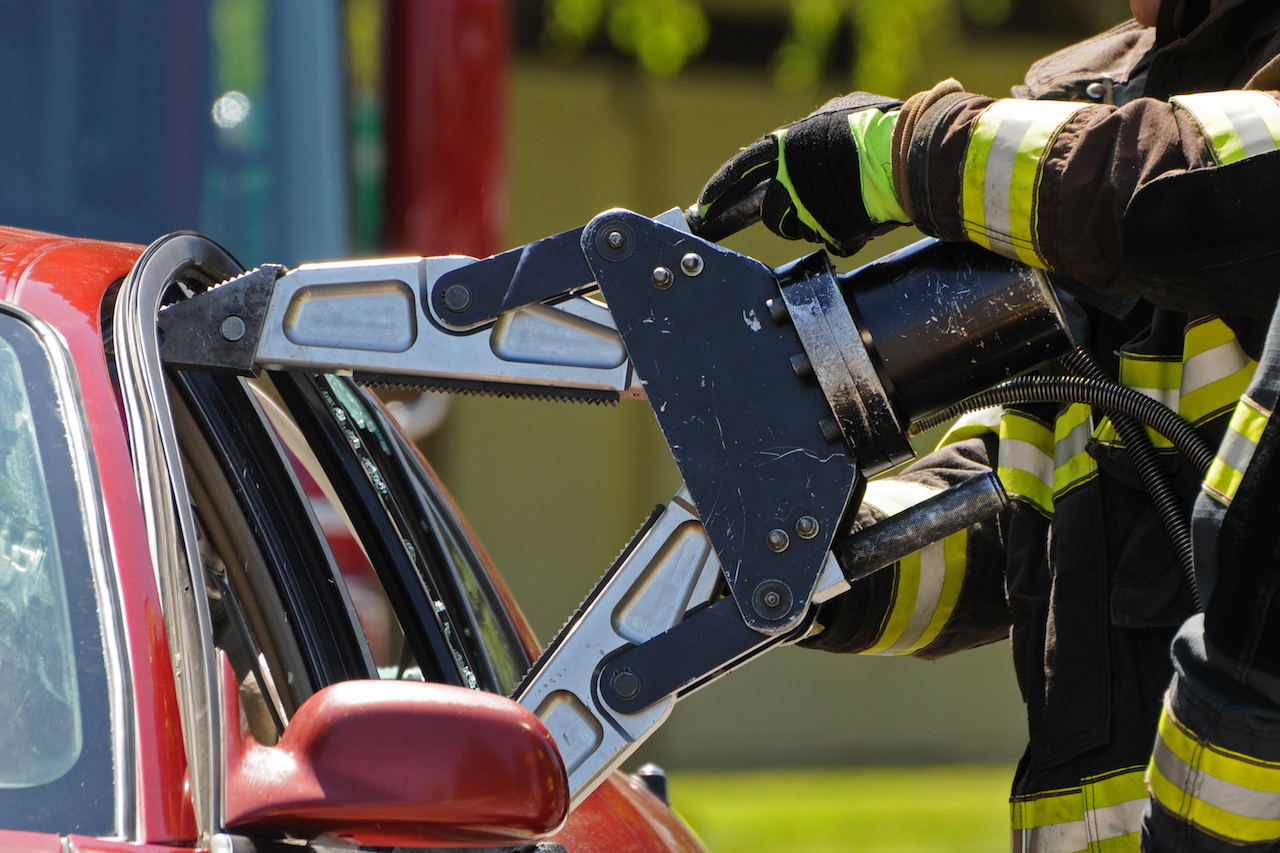Jaws of Life: Invention, tools and uses
The Jaws of Life are a firefighter's emergency tool and valuable companion during crash recoveries

The Jaws of Life is a hydraulic rescue tool that is used to cut through cars and rip open vehicles' doors to release stricken occupants.
Modern vehicles are built with strong, durable frames designed to prevent damage to passengers and internal car parts, even during a collision. However, in the most severe incidents, these frames can be flipped, compressed and crushed, causing potentially serious injury to the occupants.
When first responders arrive at traffic collision, their main goal is to release the vehicle's occupants quickly and safely, according to the Global Road Safety Partnership. The Jaws of Life is the favoured hydraulic tool for this job, as it is highly powerful and capable of removing any material or debris obstructing a crash victim's exit from the vehicle, according to McLaren Oakland Hospital.
This equipment can widen openings to the vehicle, cut car frames apart and lift crushing weights from passengers.
Emergency extraction tools
Cutters, spreaders and rams are used to pull apart vehicles.
How the hydraulics work
How can these tough tools push, cut and ram through a car's high-strength materials? Hydraulic machines, such as the Jaws of Life, use high pressure liquid which is converted into mechanical energy, according to the Center for Compact and Efficient Fluid Power. Oil is the most common fluid for these machines, but the Jaws of Life tools use phosphate-ester fluid. This is a fire-resistant alternative, which does not conduct electricity and makes a rescue operation safer.
Related: 6 simple machines: Making work easier
Get the world’s most fascinating discoveries delivered straight to your inbox.
When in use, a piston inside the tools pushes the liquid downwards. As an incompressible liquid enters a small space, the pressure is greatly magnified. This effect can be created with a small volume of liquid. The liquid transfers this force to another piston which is pushed upwards. It is this force that moves the arms or blades of spreaders and cutters.
Inventing the jaws

The first hydraulic rescue tools were invented in 1961 by car parts manufacturer George Hurst, according to the National Museum of American History. Surprisingly, Hurst was not a firefighter but made a living by making cars faster and arguably more dangerous. Hurst built parts for race cars.
When Hurst witnessed crews rescuing a driver who had crashed, he saw flaws in the existing traditional tools. They were too slow and not very efficient at cutting the car's material. In 1961 he patented the first hydraulic rescue tool, which he named the Hurst Power Tool.
Related: Central locking: How cars' electrical door locking works
A decade later, Hurst had improved the tool to make it lighter to carry and during the 70s it was embraced by many firefighters, according to the Hurst Jaws of Life website. As the hydraulic tool saved many victims from the "jaws of death", its name was revised and became the Jaws of Life
Additional resources
Hear more about how firefighters use the Jaws of Life in this video by Bloomington Fire Department. Additionally, read about how Hurst celebrated 50 years of the Jaws of Life in this article by the Journal of Emergency Medical Services (JEMS).
Bibliography
- "First Response to Road Crashes". Global Road Safety Partnership.
- Ginglen, J. G., & Tong, H. "EMS Gaining Access and Extrication". McLaren Oakland Hospital (2018).
- "Fluid Power System Dynamics". Center for Compact and Efficient Fluid Power (2009).

Ailsa is a staff writer for How It Works magazine, where she writes science, technology, history, space and environment features. Based in the U.K., she graduated from the University of Stirling with a BA (Hons) journalism degree. Previously, Ailsa has written for Cardiff Times magazine, Psychology Now and numerous science bookazines. Ailsa's interest in the environment also lies outside of writing, as she has worked alongside Operation Wallacea conducting rainforest and ocean conservation research.


